|
The Tone of Meteor
The plasma which meteor rubs against the atmosphere reflects an artificial and natural radio wave.
Since we can hear the reflected radio wave with radio.
Lower three are the "tone" of the meteor observed at the time of the Leonids meteors on November 18, 1999.
Sounds called "cone" or "been" is the tone of the meteor.
Although all of three are the same tones, a file format is different.
流星が大気と摩擦してできるプラズマは,
人工の電波や自然発生した電波を反射するので,
反射された電波をラジオで聞くことができます.
これはいわば,流星の奏でる宇宙の“音色”と呼べるでしょう.
下の3つは1999年11月18日のしし座流星群のときに観測した流星の“音色”です.
コーン(ビーン)という音が流星の“音色”です.
3つはすべて同じ音色ですが,それぞれファイル形式が違います.
(Real Audio fileは専用再生ソフト:Real Audio Playerがないと再生できません)
 Dynamic spectrum and another tone of Leonids Dynamic spectrum and another tone of Leonids
● 1 minutes from 11:14am  (Only HRO, monaural) (Only HRO, monaural)
・wav file (470KB)
・MP3 file (300KB)
・Real Audio file (160KB)
By courtesy of S.Toyomasu (Misato Observatory)
| 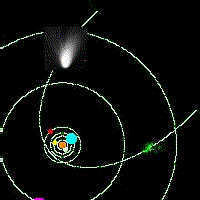
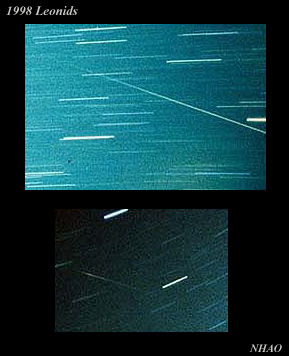
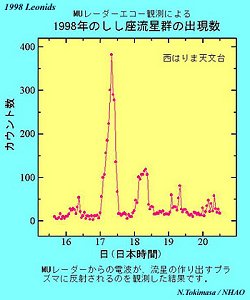
 Dynamic spectrum and another tone of Leonids
Dynamic spectrum and another tone of Leonids
 (Only HRO, monaural)
(Only HRO, monaural)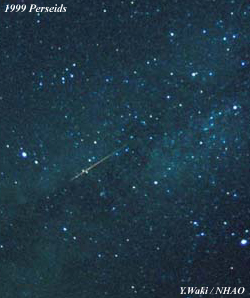
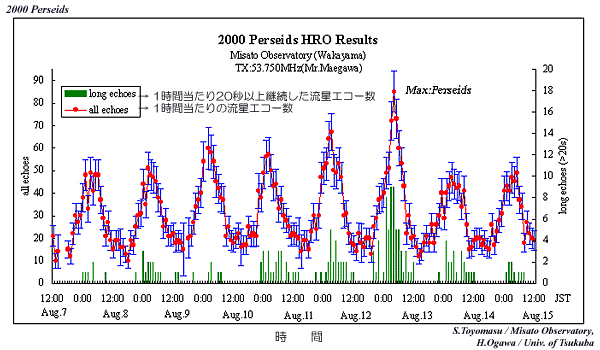
 Go to Submenu
Go to Submenu Go to Menu
Go to Menu